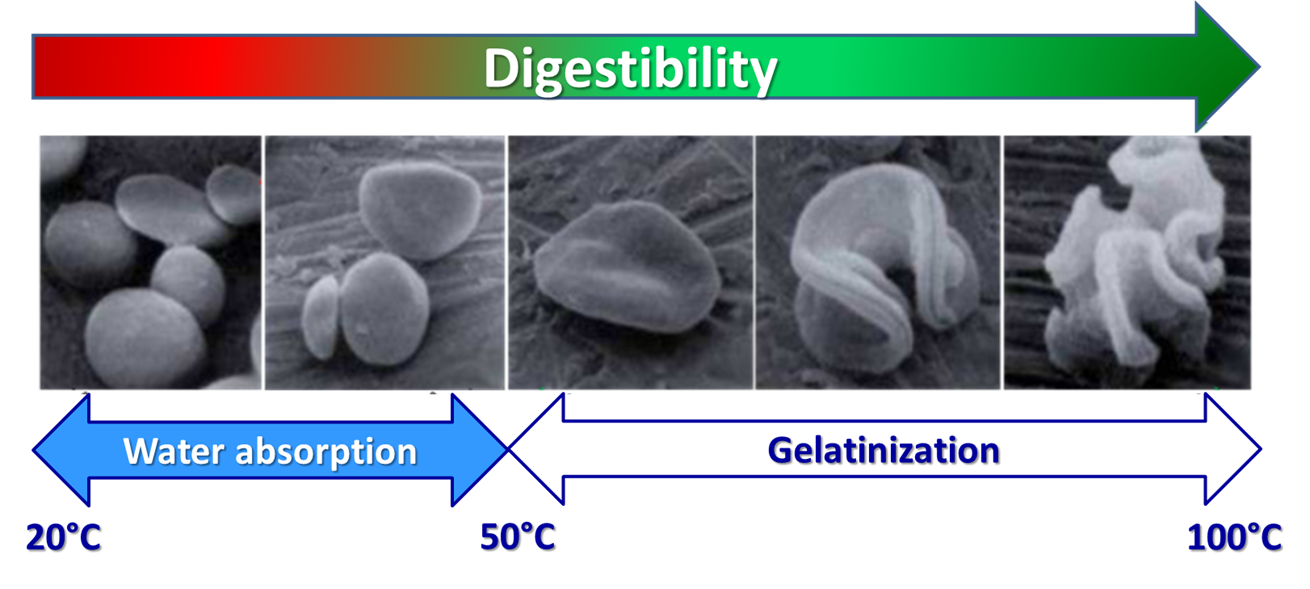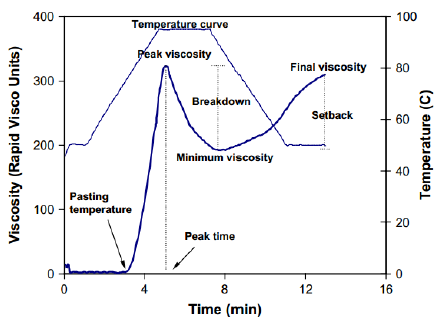The viscosity profile is a set of indices describing the cooked viscous properties of starch in terms of gelatinization and retrogradation tendency, being both the basis of starch digestibility (Hamaker et al., 1990; Suwannaporn et al., 2007).
Gelatinization is a process that breaks down the intermolecular bonds of starch, in the presence of water and heat (Liang et al., 2003).
Thus the crystalline starch becomes amorphous and hygroscopic and the granules start to swell, depending on temperature, water, protein, lipid, solutes content and amylose:amylopectine ratio. Therefore amylose and amylopectin chains result more exposed to hydrolytic digestive enzymes than raw starch (Figure 4).

Figure 4. Structural modifications of starch granules during the gelatinization process.
This variable is composed by:
With the exception of the gelatinization temperature, all this indices are commonly quantified by the Rapid Visco Anlyzer (RVA) instrument: in fact, the changes in viscosity provide a characteristic curve (Figure 5) depending on chemical-physical characteristics of the starch analyzed.

Figure 5. Peculiar RVA profile of rice starch (Source: Copeland et al., 2009).
Created with the Personal Edition of HelpNDoc: Full-featured multi-format Help generator